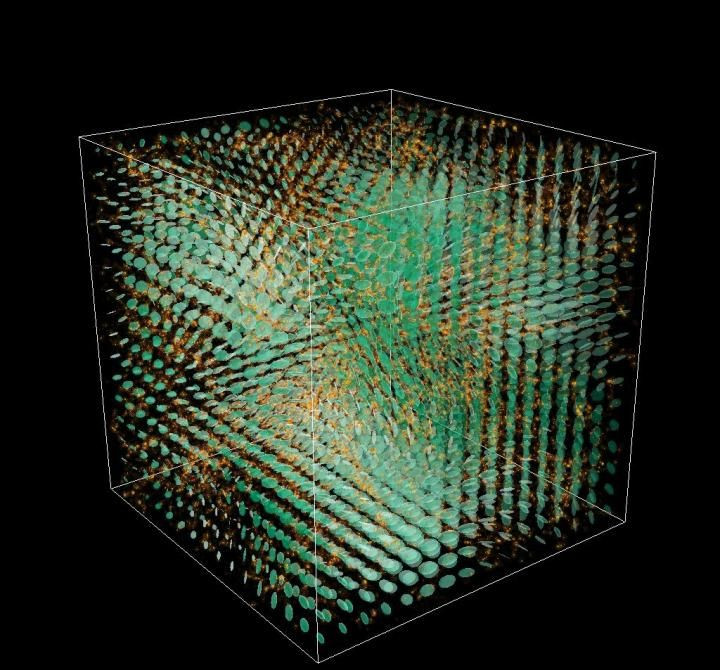New Simulation Incorporating Effect Of Gravitational Waves Could Shed Light On Dark Energy

Less than a month after gravitational waves — ripples in the fabric of space-time — were discovered, scientists have created a way to incorporate them into a numerical code that can, with unprecedented accuracy, simulate the expansion of the universe. The code, named “gevolution,” is based on Einstein’s theory of general relativity, and could shed light on dark energy — the mysterious force that makes up to 70 percent of the universe and is driving its accelerating expansion.
As explained in a study published in the journal Nature Physics, the code, developed by scientists at the University of Geneva in Switzerland, incorporates, for the first time ever, the rotation of space-time — known as “frame-dragging” — and amplitude of gravitational waves in simulations of the evolution of the cosmos.
“This opens the way for the comparison of simulation results of the evolution of the Universe with observations. With their new code, the physicists at UNIGE [University of Geneva] will be able to test the theory of general relativity on much larger scales than at present,” the researchers said in a statement released Monday.
Gravitational waves, whose existence was first postulated by Einstein in 1915, are created during violent events such as collision black holes or neutron stars. Their discovery last month paved the path for creation of a gravitational map of the universe, and could eventually allow researchers to test how general relativity operates under extreme conditions.
Current models and simulations of the universe are built on Newton’s law of gravitation, using codes that do not incorporate the movement of space itself. While these simulations are precise if the matter in the universe is moving slowly — at about 300 kilometer (186.4 miles) per hour — it allows for only approximate estimates when particles are moving at a high speed. Moreover, it does not account for fluctuations of dark energy — one of the biggest unsolved problems of cosmology.
“Therefore, it was necessary to find a new way to simulate the formation of cosmological structures and allow the study of these two phenomena,” the researchers said in the statement. “Perhaps soon light will be shed on the mysteries of dark energy.”
© Copyright IBTimes 2025. All rights reserved.






















